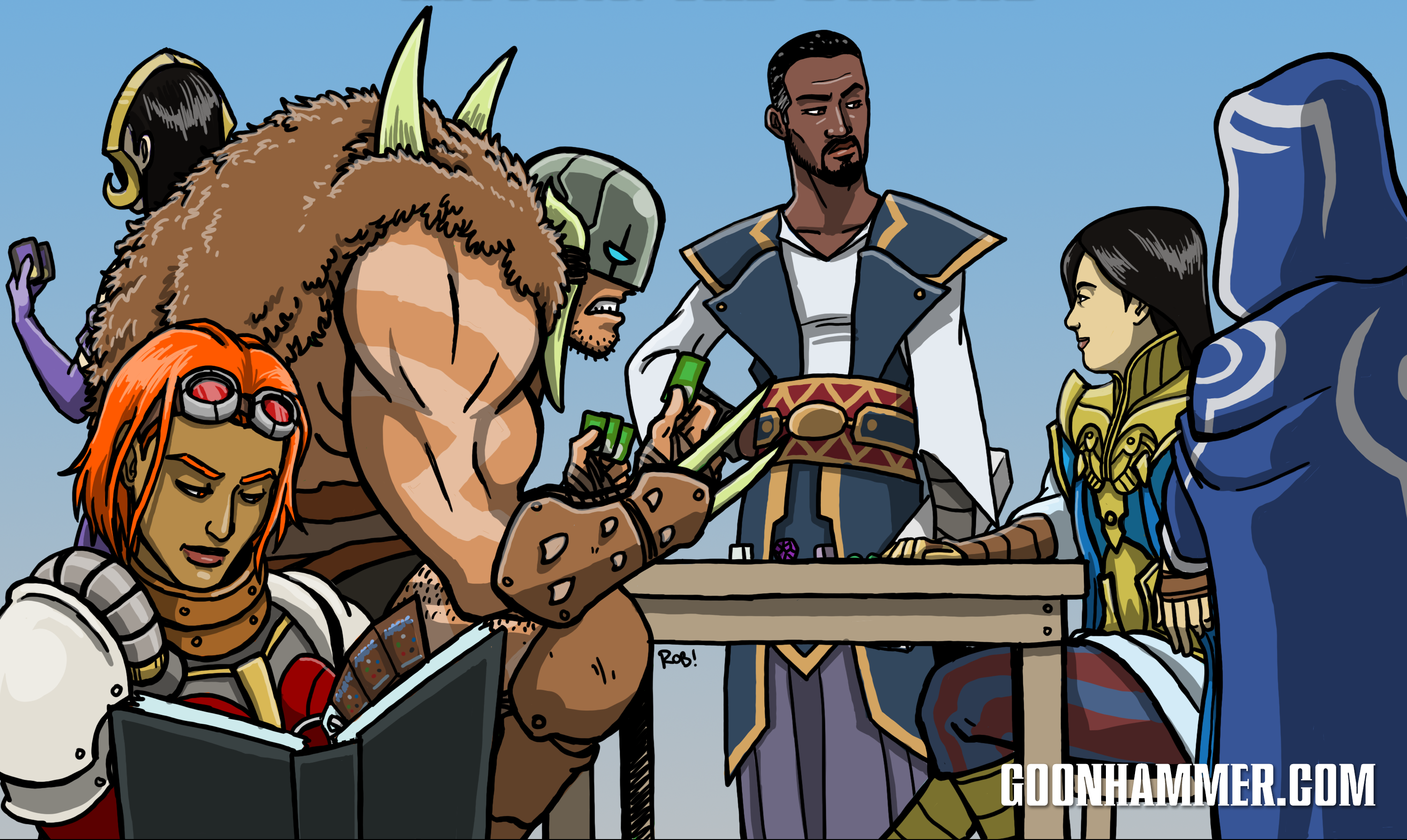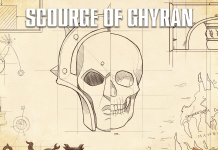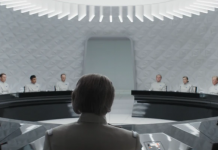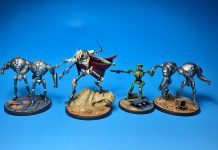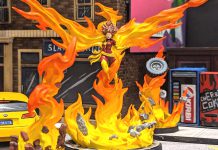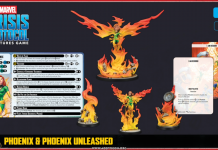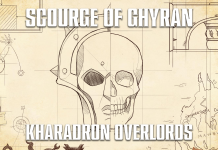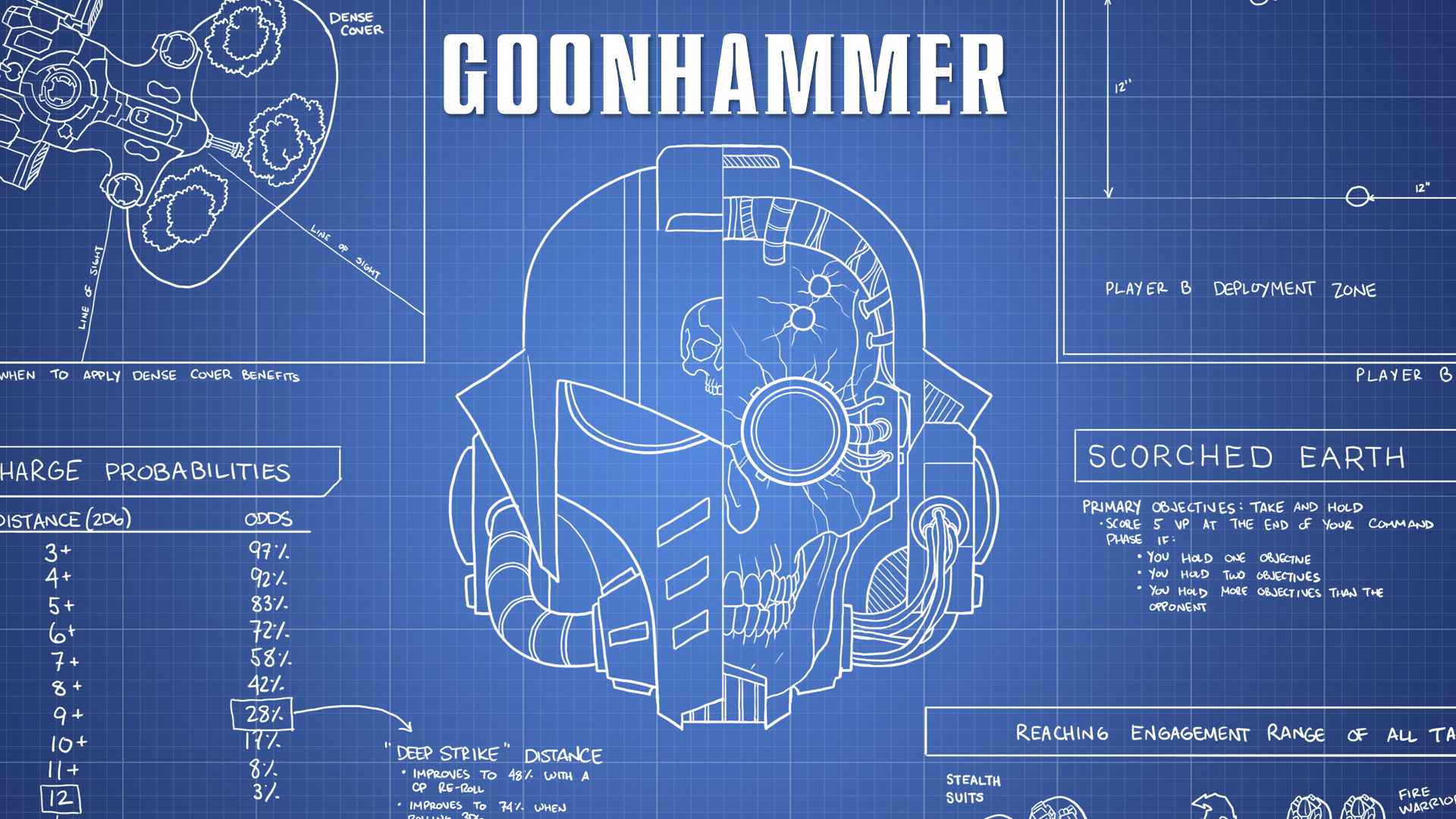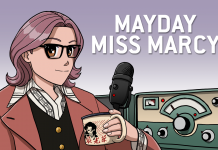Alongside the nine core factions making a fully fledged return to The Old World are the Legacy Armies. Games Workshop have released free PDFs which encompass the full rules and army list for each of these seven factions. In this article we’ll do a quick summary covering each, picking out a couple of key units and what to look at first if you’re either getting your old armies out or deciding to start your adventure in the Old World with one of these armies.
Before we start, be sure to read the following preface included at the start of each of the documents:
This document allows you to play a (faction) Army from the Warhammer Fantasy Battles range in games using the rules from Warhammer: The Old World. To use the contents of this document, you will need a copy of the Warhammer: The Old World rulebook. The rules contained within this document allow players the opportunity to try out the Warhammer: The Old World rules using models they may have in their collection. They are not intended for use in matched play events and will not be updated in line with any future Warhammer: the Old World publications.
It’s pretty clear that Games Workshop are doubling down on their stance in the previous community articles about these Legacy Lists. While the list themselves are 100% complete and feel very similar to the core factions in terms of quality/time spent on them, please keep the above in mind when reading through the lists. They aren’t going to be supported moving forward, these aren’t going to be in use at official events and they’re clearly not encouraging people to use them moving forward, but the rules are there and people are certainly going to be playing with them for a while, so lets get into it shall we?
![]()
Vampire Counts
We’ve got everything you’d expect in the list here. Vampires, Necromancers, Wrights, Skeletons, Zombies, Hounds, Ghouls, Grave Guard, Fell Bats, Skeleton Horsemen, Giant Monsters and any other creature the Necromancers and Vampires have decided to summon back to join their undead horde.
Vampire Counts work in a very similar way to Tomb Kings, with the Vampire filling the role of both the Tomb King and Hierophant. The undead horde they summon will go to war and do their bidding until they start to crumble to dust.
Vampires are still the monsters they always were and for those of you who have older vampire armies will certainly recognise some of the upgrades you’re allowed to take. They can be powerful wizards or combat monsters (or both) and ride a host of creatures while Necromancers are the wizards of the army and can use Invocation of Nehek in the same way the Tomb Kings Arise! ability works and can bring back troops to advance again. The lesser heroes all return with Wights, Banshees, and Cairn Wraiths, along with the Ghoul Kings as their own entry, giving you a solid stable of heroes. A wide range of mount options for Vampires and Necromancers brings a lot of tools to the table.

Grave Guard are your elite infantry, and while they aren’t killing machines, they’re going to stick around against all but the most devastating enemies. Skeletons are standard infantry, with options for full command and spears, while the cheapest option out there are the Zombies who are certainly filling the role of speed bumps. Creatures of the crypts round out your infantry choices if you want a few different options and Ghouls are very much dead in this version. Larger creatures such as Vargheists and Crypt Horrors are here as are Spirit Hosts.
In terms of cavalry, Blood Knights are going to be an absolute hammer and are very hard hitting. Large Black Knight blocks are certainly something you might want to look at with either a Necromancer to bring them back in the battle or a Vampire leading the unit to deal with anything which might cause them problems. Hexwraiths provide a level of “annoy your opponent” like nothing else in the list. Other options like the Corpse Cart act as support for your army, where as units like the Mortis Engine, Coven Throne or Black Coach are great centre pieces, providing buffs for your horde and debuffs for your enemy.
We have a selection of Vampire Powers and a full set of magic items with some classics returning like the Frostblade and Blood Drinker, alongside the Von Carstein Ring and the Drakenhof Banner. We also have three Lore of Undeath Spells, with Raise Dead being exactly what you’d expect and Vanhals’ Danse Macabre being similar to the Tomb Kings My Will will be Done special rule.
![]()
Lizardmen
The Children of the Old ones return in a fully featured army list. They have several special rules with Cold Blooded armywide and more specific ones such as Arcane Vassal, which allows a Slann to impact the battlefield more so than any other wizard via his skink proxies.
Slann return to the game as the masters of Magic they should be. They are Level 4 wizards with a wide selection of lores to pick from, including having access to High Magic – which puts him in a very elite little club. The Saurus Heroes are pretty basic but have a solid statline and have access to a bunch of excellent weapons. Skink Priests deserve a special mention here, as they allow the Slann to cast spells from outside of dispelling range, impacting the battle in key places via the Arcane Vassal rule.
Temple Guard are a solid bodyguard unit that can take wounds for their Slann. Saurus Warriors are mandatory in the army (1+) and are fairly decent in combat, with their decent melee statline and Obsidian Blades that give them -1 AP. Skink Skirmishers are back and ready to be annoying once more. They’re going to pepper you with poison javelins or or upgrade to the mutli-shot blowpipes in an attempt to deal damage. Sadly for those of us still holding on to their 5th edition starter set skinks, bows have not survived the reboot and so remain the premier blowpipe stand-in of choice.
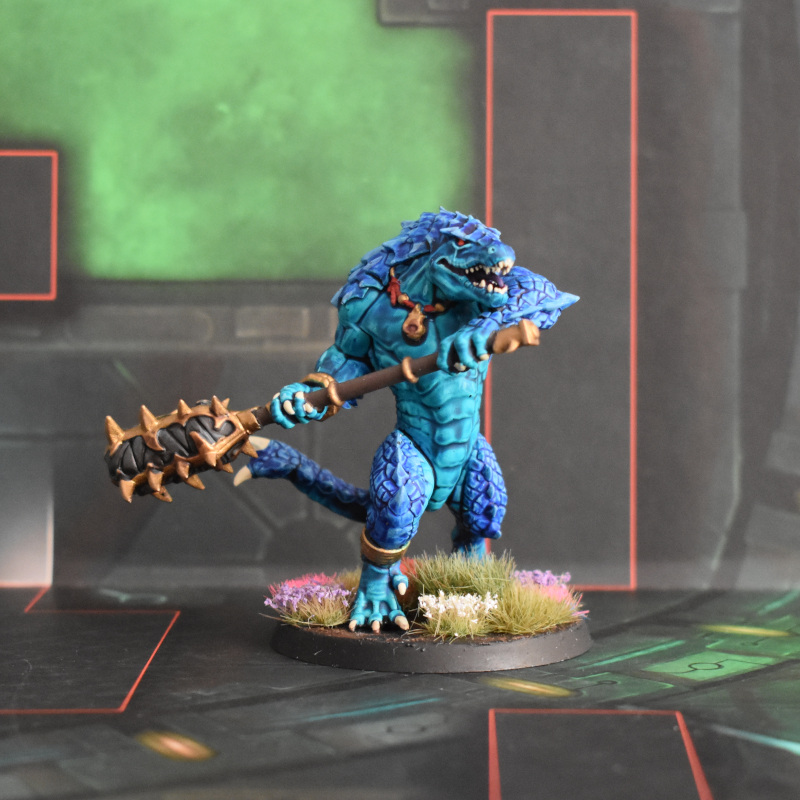
Kroxigor bring real melee power threat and can charge through units of skinks in a similar way to Chariots go through Chariot Runners in the Universal Special Rules. Beast packs are back with Salamanders and Razordons for cold-blooded artillery support, while a host of Dinosaur riding options are available to the Lizardmen in the form of Cold One Knights, Terradons, Ripperdactyls, Stegadons, Bastiladons and Troglodons!
The Slann have access to Disciplines of the Old Ones and their Becalming Cogitation rule is excellent allowing them to increase their dispel range by 3″, in addition to rerolling one dispel dice a turn. Some key magic items are the Hide of the Old Ones, which allows you to reach that sweet 2+ save on some units, and the Sun Standard of Chotec, which prevents stand and shoot reactions, while also making you harder to hit with ranged fire.
The Lore of Lustria is also available, with two useful utility spells that provide healing and can generate Line of Sight Blocking monsoons where necessary.
![]()
Skaven
Similar to the other Legacy armies, we’ve got a complete army list of anything which was previously available in to the army before the End Times of Warhammer Fantasy. This does mean that there are no Stormfiends or the newer Vermin Lords, but everything else is here. Skaven have a returning rules which will feel familiar such as Scurrying Masses increasing your Leadership based on your rank bonus and Scurry Away allowing the rats to run away faster from the enemy – appropriately very much the opposite of their bearded nemesis, the Dwarves!
Skaven Commanders are the respectable fighters they always were – nothing to write home about, but they are cheap. The Grey Seer is a Lv3 Wizard with all the normal upgrades, including the Screaming Bell, which now sits outside units it accompanies, with them dragging it along similar to how they move in Age of Sigmar. The Bell itself returns to a 2d6 random effects table with very variable but – for once – nearly all positive effects. Warlocks have returned, a potentially cheap and cheerful wizard or a fully-tooled up master engineer if you choose to give them items or magic. Assassins also return and the masters of Clan Eshin can hide out in your units, giving them a surprise edge in combat as well as helping Gutter Runners to deploy up close and personal. Plague Priests provide a hybrid melee/spellcasting threat, and will genuinely threaten unwary heroes.
Stormvermin and Clanrats are your main core units. Warhammer Fantasy Veterans will notice that Slaves have been collapsed into Clanrats, which makes sense given their similar role. Weapons Teams are back with a load of options from long-range machine-gun fire to close combat chaos, with the Ratling Gun and Warpfire Thrower being personal favourites.
Jezzails provide long range firepower and Poisoned Wind Globadiers provide deadly fire at a short range. Clan Moulder brings both Giant Rats and Rat Ogres into the fray both moving quickly and providing either high-quality, expensive muscle or a disposable horde to throw in front of your opponent. Clan Eshin has sent the cheap and useful Night Runners and the very versatile, potentially powerful Gutter Runners to the fight. Clan Pestilence isn’t left out – Plague Monks are cheap and have a lot of attacks with three each for 9pts and Censor Bearers bring some reliable high Strength attacks.
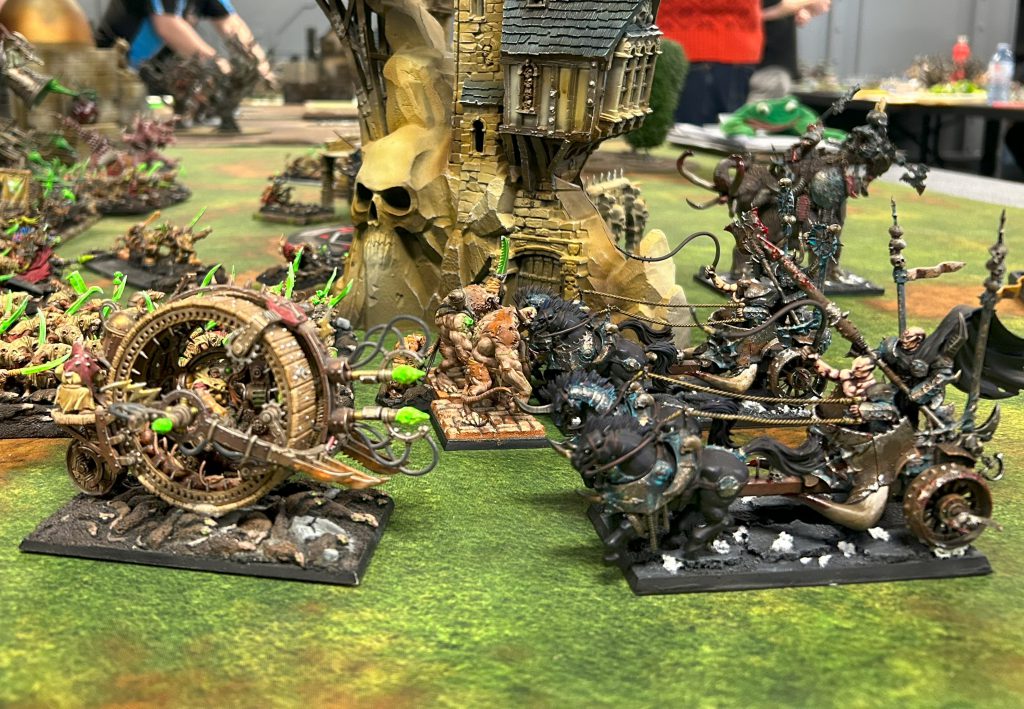
The Doomwheel and Hell Pit Abomination are hard hitting monsters, while the Warp Lightning Cannon and Plagueclaw Catapult form your long range artillery.
Notable magic items include the Fellblade, which any self respecting Skaven Warlord will have a bunch of fun with and the Death Globe, which against the right target is excellent. The Warpstone Amulet provides a cheap 4+ ward save, but only against non-magical attacks. Finally, the Stormbanner is still annoying for anything which wants to fly around the battlefield and helps you run into enemy gunlines and the Storm Daemon adds an additional magic missile bound spell into your list.
Skaven Spells have returned with Skitterleap, Warp Lightning and Cloud of Corruption represented. Skitterleap remains incredibly useful, with the caveat that you can’t use it to fling a character into combat any more, but to get into position to cast a spell or pull a character out of a losing combat, it’s going to be a staple of your play. Warp Lightning only fires D3+1 shots, but it’s Strength 5 and -3AP meaning it’s really effective against heavy armoured tough targets like enemy Cavalry. The rats look interesting for sure!
![]()
Ogre Kingdoms
Ogre Kingdoms are one of the more restricted legacy lists with less options that most armies. Their Warhammer Fantasy Battle range wasn’t huge, and both in ToW and Aos, they’re paradoxically quite a slim army! They are pretty unique in that it’s an entire army of Monstrous Infantry with just a few hangers on. They have a bunch of special rules to accommodate this, all getting Fear and Impact Hits (at least 1) and having put them on the table they certainly pack a punch.
You’ve got your standard hard hitting melee lord in the Tyrant but he’s now got access to mounts in the form of both a Stonehorn and Thundertusk. The Stonehorn certainly seems worth it, turning him from one of the most dangerous combat characters in the game into an absolute disaster for anything he gets his grubby hands and hooves on. Wizards come in two varieties of both Butcher and Firebelly flavoured. Both have access to the same lores, disappointingly, but the Butcher can be upgraded to a Slaughtermaster and potentially a level 4 wizard. Hunters are a ranged hero choice that can also join a unit of Sabretusks, giving bonuses to both hero and not-hounds.
Bulls and Ironguts are your “basic” and “elite” choices with Leadbelchers covering the Ogres with Guns niche. Ironguts, with their 5+ save and Great Weapons hit really hard, and their Ogre Charge allows them to clear out an enemy front rank with impact hits, lessening the number of attacks back into your unit before they swing with their great weapons. Leadbelchers have learned to fire grapeshot, and can switch between high-quality and high volume shots, so you can tailor depending on the situation. Maneaters are your specialist choice for ogres and can select from a range of special rules and equipment types. There’s a lot of flexibility there and it’ll be interesting to see what the community does with them on the table.
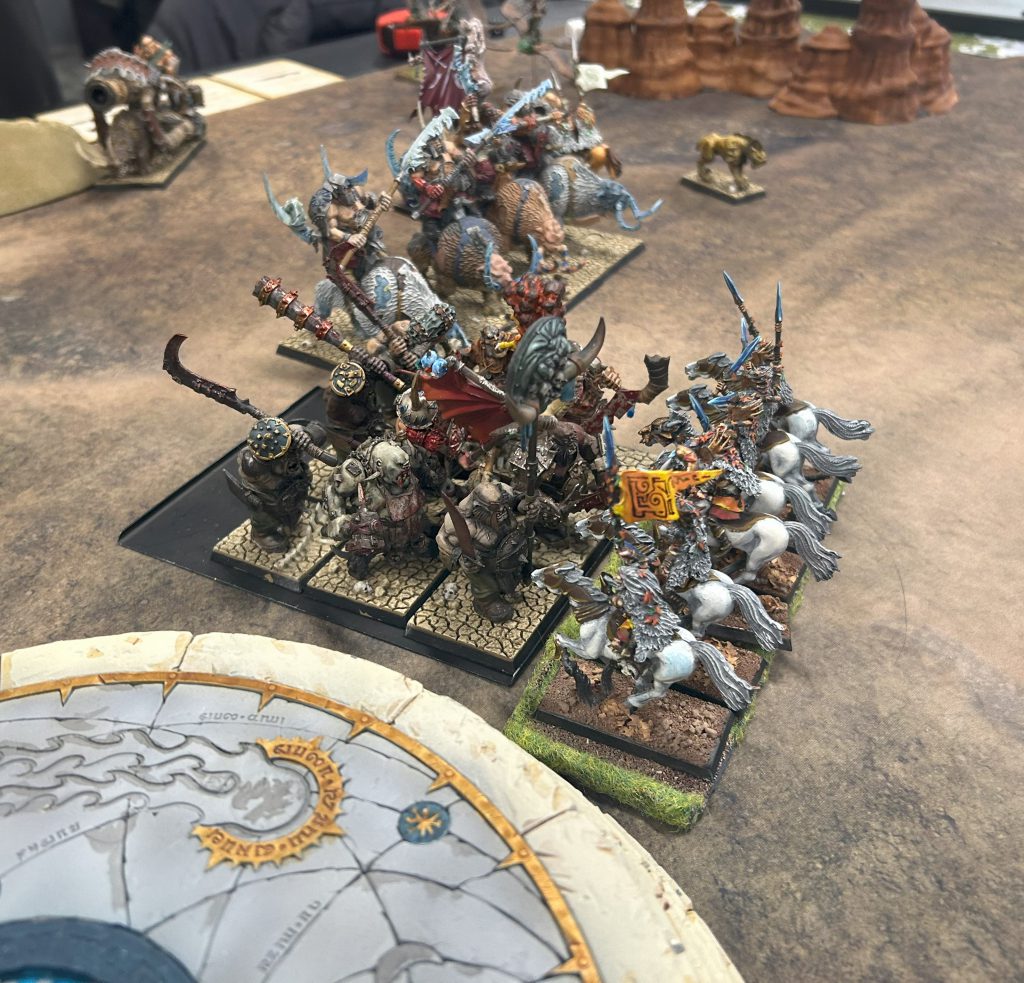
Gnoblars are a distant cousin of the Goblin and come in ranked and skirmish varieties, both hilariously viewed as largely insignificant by their Ogre overlords. Sabertusk Packs are a more nimble War Beast unit which can allow them to annoy your opponent but you do have to contend with the Impetuous rule while doing so. Yhetees pack a punch in combat and allow you to navigate terrain a little with their Move through Cover rule, making them a surprisingly mobile threat.
Mournfang Cavalry are seriously dangerous on the charge with D3 impact hits and 6 attacks per model. Massive combat threat comes with a significant cost, at 64pts each (before upgrades!) they’re not cheap. Ironblasters and the Gnoblar Scraplauncher straddle that line between Chariot and semi functioning artillery piece. Gorgers bring a little bit of ambushing and a lot of positional utility to the force before we get onto the big lads.
Stonehorn Riders and Thundertusk Riders provide some of the biggest monsters in the game with S6, T6 and 6W each. Stonehorns are pure combat where Thundertusks provide a little more flexibility with a debilitating aura and breath weapon. Giants, the eternal comedy choice, also bring a similar statline and the classic bunch of bizarre attacks.
Tyrants can pick up Big Names such as Mawseeker to grant +1T (infantry only) or Giantbreaker which provides +1S. Magic item wise Tenderiser is a powerful weapon for does come in at the pricey 70pts but +2S, +1A, -3AP and Multiple Wounds D3 (and Strike Last) might well be worth it. The Spangleshard gives a cheap 4+ ward save for 35pts but just be warned, it will break at some point during the game, and can’t be relied upon to keep your Tyrant safe when he needs it most. Meanwhile the Halfling Cookbook increases the Command Range, Dispel Range and the range of a single spell (you pick) by 3″.
![]()
Dark Elves
While High Elves join the core factions, their more interesting, spiky brethren are consigned to Legends. Fans of the classic roster will not be surprised to know that everything you expect is here, with a range of special rules to reflect the elite and terrifying Dark Elf army. They share several with the other types of Elves, and gain eternal hatred (in every round of combat) against the High Elves to boot.
Nobles are the generic melee characters, with a bunch of mount and weapon options to give them the ability to cover anything you want them to do in game. Sorceresses are standard spellcasters with access to several lores of magic, letting you choose almost any option to support your army. Beastmasters are generic combat heroes with a powerful ability to buff nearby monsters. Assassins can hide in your units, popping out an an opportune time to kill or poison enemy heroes. Death Hags will provide serious combat muscle to a unit, and are allowed to pick from a choice of upgrades to either tailor them for pure murder or supportive roles.
Dark Elf City Guard leading the Core section coming in two flavours, Warriors and Repeater Crossbowmen. At 12pts with a shield, the Repeater Crossbowmen are really efficient, dealing damage at range and not taking a lot back. Corsairs are your other Core infantry block and provide a lot of attacks at a cheapish price point for the army. Core is rounded out by Dark Riders and they have an ability to be armed depending on the role you’d like them to perform, either melee, ranged or both.
Three types of combat infantry make up the bulk of the special choices. Witch Elves which deal a lot of attacks in a frenzy to chew through hordes, the Executioners who can cut through the most armoured troops and the Black Guard who are one of the most exciting looking Anvils. Black Guard – 1 unit per Noble in your army – occupy a very similar role to the High Elf Phoenix Guard a cheaper price point. Dark Elf Shades have different melee options but all come with a repeating crossbow to deal damage from afar.
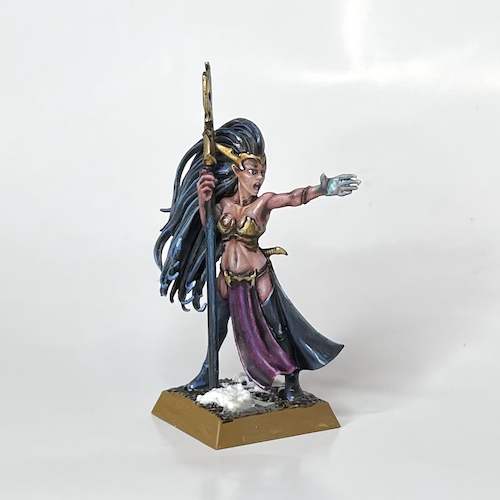
Cavalry options are led by the Cold One Knights as shock Cavalry with Doomfire Warlocks providing some different magic support based around the Unit Strength of the unit with their Cursed Coven special rule. We also have two chariots in the Scourgerunner and Cold One Chariots, one being a quick mobile platform with some shooting and the other following in the footsteps of the Cold One Knights and being a solid melee Heavy Chariot option. The Cauldron of Blood operates similarly to the Skaven “mounts”, sitting outside the unit providing combat power, as does the alternative build of the kit in the Bloodwrack Shrine.
Rounding out the list we have the Repeater Bolt Thrower to lay down some heavier firepower and the Bloodwrack Medusas add a close-range option with a literally petrifying ranged attack. Turning to the big beasts, the Hydra provides a lot of attacks in a small package (especially while it’s still got all it’s heads) and the Kharibdyss provides crippling Leadership debuffs. Keeping a Beastmaster close to either will ask questions of your enemy they’ll be forced to answer.
In terms of Magic items the Blood Armour is great, your Dreadlord can go in, inflict a handful of casualties weather the return have a 2+ save. The Standard of Slaughter is an improved Warbanner, granting D3 extra combat resolution and at 40pts will fit into most lists. Finally the Guiding Eye is a single use item which allows the entire unit to reroll failed hits in a shooting phase. With a big unit of Shades or other Repeater Crossbows you’re going to have some real fun here.
Chaos Daemons
The Chaos Daemon list is massive, and structured so that you can either play as single god or as a multi pronged list featuring units from each of the four powers. Depending on your General different units shift between core, special and rare, so building to a theme is clearly supported (which is great!), but taking a wide smorgasboard of only the most powerful demon choices is much more difficult. Only Demon Princes, Furies and Soulgrinders are generic, un-marked units, and everything else will tie to your General, so choose wisely!
All Daemons share universal rules, gaining a Ward Save against non-magical attacks and the like which will be familiar to those who’ve played Warhammer Fantasy in the past along with instability, a mechanic similar to the Undead Crumble but based around taking Leadership tests after lost combats.
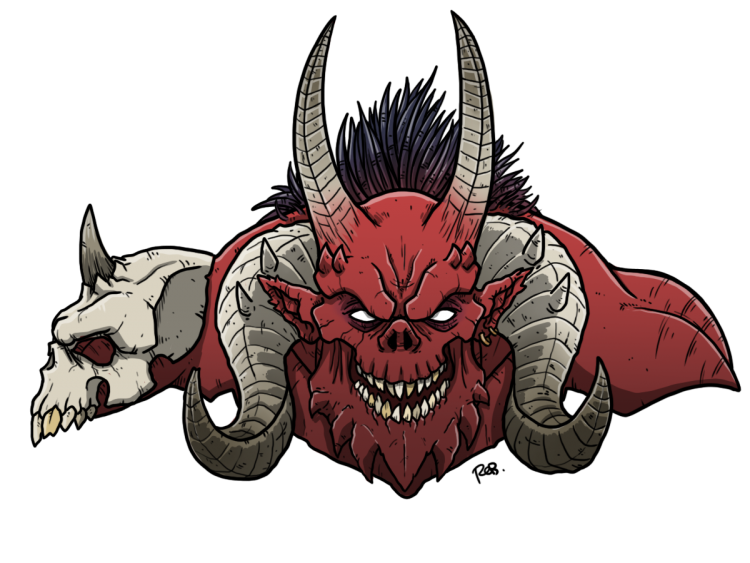
Khorne has what you’ll expect with Bloodthirsters, Heralds, Bloodletters, Flesh Hounds, Bloodcrushers, Blood Throne and Skull Cannons. They’re a very combat orientated faction with the Cannon providing one of the very few ranged options in the army. Bloodthirsters have WS10 and the profile of Dragon making them really powerful in combat. There’s a range of weapon options you can splurge on, making them very expensive. The Great Axe in particular is a massive damage threat, making him S8 and -3AP with Armour Bane (2) and Monster Slayer, not bad with 6 attacks which hit most things on 2’s!
Heralds are still good combat characters and Bloodletters are slow, but decent, melee infantry. Flesh Hounds provide faster troops but the Bloodcrushers are the real hitting power of Khorne Daemons with Impact hits and a bunch of high Strength, good AP attacks for each model. You’ll also want at least one Throne for an aura of rerolls if you’re taking more blocks, it’ll add up over the course of the game.
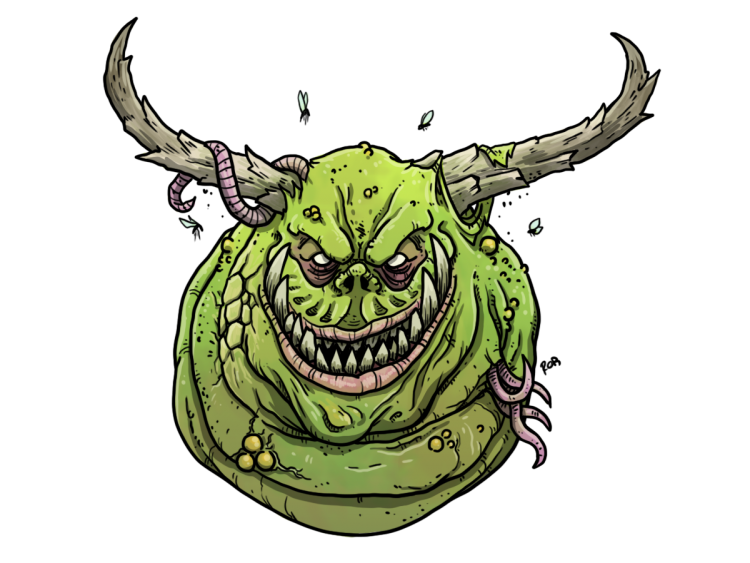
Nurgle is more about the toughness of the Daemons but are once again a melee focused force. Your Great Unclean One can buy different weapon upgrades and with T7 and 7W, an inbuilt regen, and his daemonic ward is a really tough model to shift. They can also upgrade to a higher level of magic with access to Battle, Daemonology (of course!) and Dark Magic. Daemonology really works well as a buffing lore for the units you’re going to be taking.
Heralds are again back and tough to kill while being able to be upgraded to wizards all while having a decent melee profile. Daemons will be one of the armies which are really flex spells as a result of this. Their squishy wizards are T5 and come with an inbuilt ward save and regen! Plaguebearers are just a nightmare for troops to get through (even if they don’t deal loads of damage) and Beasts of Nurgle are slightly quicker and can do very well with a lucky roll on their variable attacks. Nurglings have of course returned to be annoying and spoil the best laid plans of the enemy, and Plague Drones provide you with something which can go out and kill things at speed.
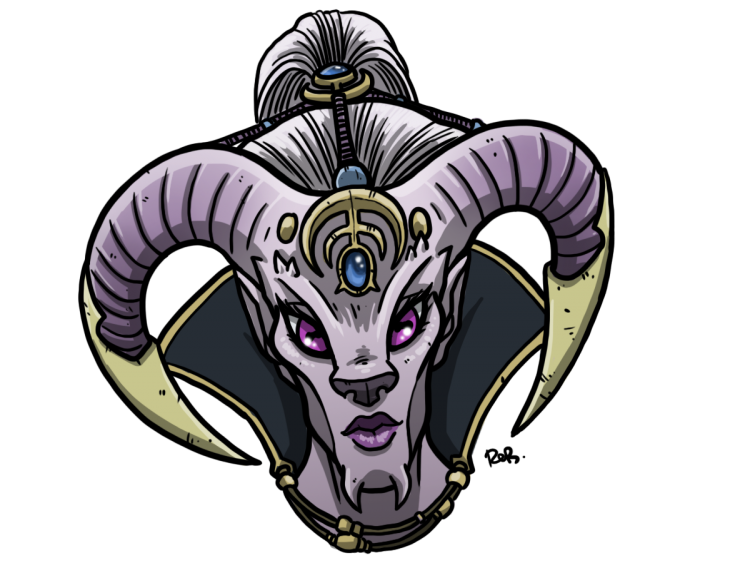
Slaanesh as expected forms a third a combat faction, but does so through speed and picking their fights rather than brute force (Khorne) or just not going away (Nurgle). Once again we’ve got the Greater Daemon in the form of the Keeper of Secrets. Here, we’ve got a Daemon who’s able to upgrade to a Lv2/3/4 Wizard and is quick on their feet with Movement 8 and vicious in combat. You’ll be able to pick whoever you want to fight and then make them go toe to toe with six strike-first-killing-blow attacks. Heralds are the nimble combat characters with a host of upgrade options in terms of mounts between the steeds or two chariot types making them a lot more versatile than the other Chaos God Heralds.
Daemonettes are the core of the army and have -1AP, Armour Bane (2), Extra Attack (1) Weapons. They’ll throw out a lot of attacks that can punch through armour, giving them an edge that they often lacked in previous editions. Seekers are the mounted version and while lacking the better melee weapon (claws) they have a host of different rules and are very quick with Movement 9. Fiends are your Monstrous Cavalry variant with an effective 4 attacks per model and they’ll nearly always be going in combat before their opponent’s through their Soporific Musk special rule. The final pieces of the Slaanesh list are the chariots – Seekers are the cheapest option and are lightning-quick around the table, Hellflayers bring a horrific amount of impact hits and attacks, and Exalted Seekers are your Herald-mounted option. An almost fully Chariot mounted Slaanesh list is very possible!
![]()
Tzeentch stands apart from the other Gods with a ranged focus, either in magic or flames of Tzeentch attacks (just as planned). Their Greater Daemon is the Lord of Change and comes as a Lv2 Wizard which can be upgraded. Characteristically, they have wider access to spell lores than the other Gods, with Elementalism and Illusion added into the options. Both of these suit a Tzeentch list much more than those available to Nurgle and Slaanesh casters. Heralds provide some ranged attacks and can be upgraded up to lv3 wizards. Combined with Disc or Chariot options and you have a horribly mobile spellcaster getting into all sorts of trouble with their 360 degree line of sight.
Pink and Blue Horrors have been split into units, saddening those of us who used to have to do quickmaths to work out how many Blue Horrors would be added to your army after the enemy shooting phase. Both are similar with the Pinks being able to cast magic as a bound spell in addition to the shooting of the Flames of Tzeentch, and the Blues a bargain basement option. Flamers are your skirmishing shooters with a better ranged attack and Brimstone Horrors make a return as a Swarm for the Army, so Nurgle doesn’t have a monopoly on that anymore. Screamers are your fast moving melee flyers and the Burning Chariots are a nice mix of hard hitting melee charge via their impacts and shooting from the Flamers on top.
Away from the marked units with have a Daemon Prince very similar to the one in the Chaos Warriors list so I’m going to skip over him a little. The Furies are a very handy flying unit that will fit well into Khorne and Nurgle armies to give them a little more speed. The Soul Grinder has survived, incredibly, and provides a fairly credible mixed ranged and melee threat, though that won’t help the model.
We also have a rather exhaustive list of upgrades, with Daemonic Gifts in generic and god flavoured options. Khorne for example has 8 options, Nurgle 7, Slannesh 8 and Tzeentch 8 so you’ve got a nice selection to pick from. We also have 4 spells for the Lore of Daemons, one for each of the 3 Gods plus a generic one anyone can take. Overall there’s a lot to play with here, so have a read and maybe break out that old Chaos Daemon 40k army to give it a try right?
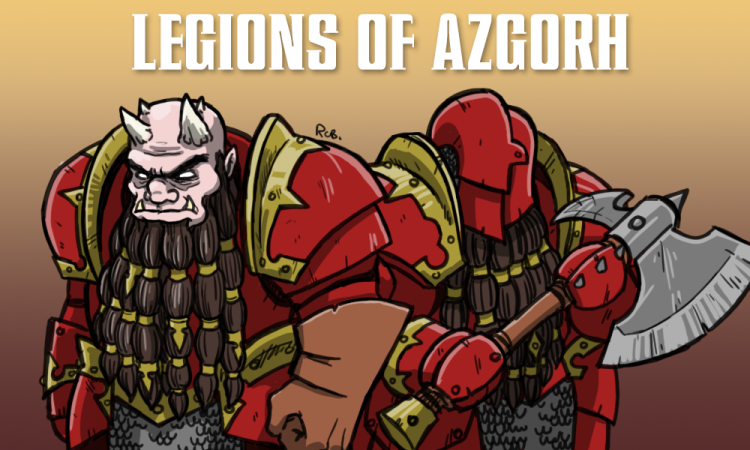
Chaos Dwarfs
I was surprised to learn these were getting their own list back when they Legacy factions were announced. They haven’t had a change in rule since 6th edition’s Ravening Hordes book and haven’t had an army book since 5th edition. The Forge World Tamurkhan set of rules provided a new and very different approach to Chaos Dwarves back in 7th edition Fantasy but never saw mass popularity on the table. Don’t think this doesn’t mean it’s a cutdown list though, there are 21 army list options here so plenty to keep you going if you’ve got that old army in the loft which hasn’t seen daylight since 2006!
Sorcerers of Hashut are your General-Wizards, tough and versatile spellcaster characters who can also buff your war machines. They retain their old turn-to-stone on a miscast rule – someone was doing their homework for this list! Both Lammasu and Great Taurus return, giving you a real variety of mount options if you want to mobilise your wizards. Infernal Guard Commanders are stock melee/ranged hybrid characters to support your axe or gunline units.
The Bull Centaur Taur’ruk is the standout though – tough and beefy while being dangerous but can easily get to 200+ points if you want to build him that way. Fully tooled up it’ll be a sight to behold on the table. The Hobgoblin Khan will lead his people bravely in battle but you aren’t going to be writing home about his accomplishments anytime soon.
The Ironsworn are an anvil melee unit which will take it’s time to attack but hopefully stand up to all but the most determined enemies. Infernal Guard make up the bulk of the armies core in solid infantry blocks and can go either cheap, with hand weapons and armour, or fully tooled up with Blunderbusses, Fireglaives, special rules and full command. There’s a lot you can do here – don’t pass them over as basic infantry!
Hobgoblins are sneaky, weak and disposable units – chaff in the form of infantry, skirmishers and cavalry that are there to support your core dwarf units by dying usefully.
The Chaos Dwarves have brought their good stuff to the legacy list – K’daai Fireborn are pretty rare in the fact they’re a monstrous infantry unit with WS4 so will hopefully make a serious dent in the enemy lines. Bull Centaur Renders are monstrous cavalry, tough, strong and exceptionally dangerous on the charge, with D3 Impact hits and Great Weapons they’ll always get to swing if the Impact hits remove that enemy front rank.

Warmachines aplenty make up the rest of the list. Hobgoblin Bolt Throwers are cheap and cheerful, but will get overshadowed by the monstrous Dreadquake Mortar, Magma Cannon and Deathshrieker rockets. Most impressively of all, the Iron Daemon is back – a full on TRAIN, heavily armed and armoured, capable of dragging a series of other war machines in it’s wake. (Editor note: I’m genuinely so happy to see the Iron Daemon back and weird. I hope the four or five of you who still have the model are excited to play it).
Magic items again have a few standouts with Grave Sceptre allowing you to wound really tough models on a 4+ at worst and the Mantle of Stone providing a +1T modifier to the model so you can have a T7 flying monster with a level 4 wizard riding around on top, which is just horrific. Meanwhile the Daemonic Familiar works reducing models in base combat’s armour or regen saves by an additional one, making your monstrous mounts even more fun in combat. It’s amazing that the Chaos Dwarfs got this much attention and honestly – bring it on, sons and daughters of Hashut. It’s your time
Conclusion
So, Games Workshop have delivered the PDF’s for these legacy factions and I honestly think the team have done a good job and put time and effort into the construction of them just like they have with the Core factions. It does all come back to that initial statement I opened with about not being intended for events but I can’t see why these wouldn’t fit, especially in the short term. I think it’s great that everything is represented and I’d encourage people to play with these armies, learn the game and then weigh up if you want to go all in on the game with one of the Core Factions to expand your options.
Personally I’m going to be playing with my Lizardmen and I might see if I can pick up some Chaos Dwarfs if the opportunity arises as they do look fun, especially that Sorcerer-Prophet on one of his Monstrous Mounts.
See you in the Old World!
Questions, comments, suggestions? contact@goonhammer.com or leave a comment below



